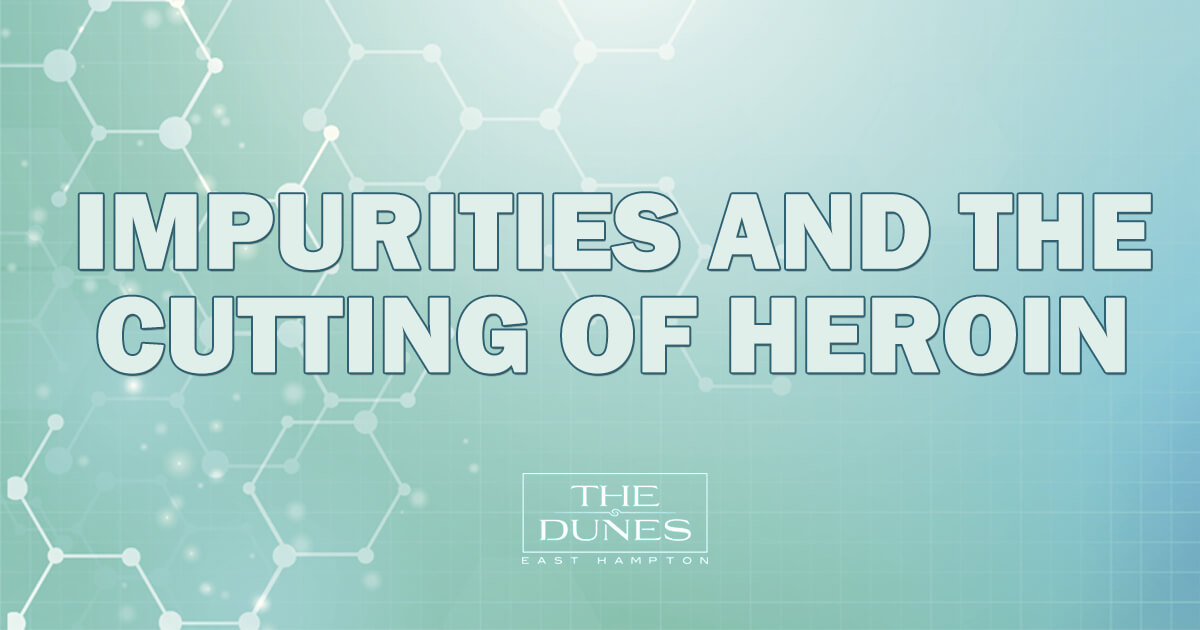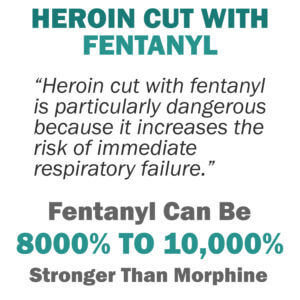
Heroin by itself is harmful enough, but now it is often cut with other substances. This increases the potential for overdose and other ill effects. See how heroin purity has decreased over the years, and what it means for those struggling with addiction.
Heroin And The Opioid Epidemic

People addicted to prescription painkillers turn to heroin when they can no longer get prescription refills or leftover pills from relatives and friends. Increasingly, street heroin is being cut with fentanyl, a strong narcotic often abused by itself.
Heroin cut with fentanyl is particularly dangerous because it increases the risk of immediate respiratory failure. While many users overdose from this combination unsuspectingly, heroin addicts are increasingly injecting this cocktail purposefully in order to achieve a better high. Either way, the declining purity of heroin is driving up the numbers of overdose and death.
Where Does Heroin Come From?
Heroin comes from the resin of the poppy plant. At the time the United States first outlawed heroin, most of the supply came from China. As time passed, more countries started producing it. According to the UN World Drug Report, in 2014 Afghanistan was the world leader for heroin distribution.
Many users strive to acquire pure heroin without success. According to the DEA, heroin from some parts of South America are only 68% pure. So what else is in the heroin?
Types Of Heroin Impurities
The impurities in heroin range from the benign to dangerous. Researchers from Johns Hopkins University estimate that heroin can be anywhere from 3% to 99% pure, making each batch unpredictable. To maximize profits, drug dealers may cut heroin with:
- Cornstarch
- Baking soda
- Powdered milk
- Sugar
- Talcum powder
- Caffeine
- OTC pain relievers
- Detergent
- Rat poison
Recently, Cincinnati police traced a series of overdoses to a batch of heroin laced with elephant tranquilizers.
Though some of these impurities seem harmless – e.g., baking soda, sugar, powdered milk – none are benign when directly injected into a vein. These substances don’t fully dissolve, creating arterial buildup and increasing the risk of complications like stroke, heart attack, and pulmonary embolism.
Cutting heroin with these fillers has another more immediate effect on users: it won’t produce the same high. For heroin addicts experiencing withdrawal, this is a recipe for disaster. They may turn to other suppliers, use unsafe needles, or cocktail with other drugs to curb their symptoms – all adding to the risk of overdose.
Recognize Signs Of Heroin Overdose
Heroin impurities increase the risk of overdose. Overdose from heroin and other opioids involves severe respiratory depression, but it is reversible if treated immediately. Signs of an opioid overdose include:
- Slow or shallow breathing
- Respiratory arrest (no breathing)
- Blue tinge to fingernails or lips
- Unresponsive to stimuli
- Snorting or gurgling
- Floppy limbs
- Unconsciousness
Because of the increasing number of opioid-related overdoses in the past decade, law enforcement, and EMS personnel are often permitted to carry and to administer naloxone, a medication that can slow down or reverse the effect of opioid overdose. These effects only last 20-90 minutes, so follow-up medical intervention is essential.
Thirty-seven states have implemented “Good Samaritan” laws that provide immunity from low-level drug possession charges when bringing in a drug user for follow-up emergency care. Some states allow the provision of naloxone with every opioid prescription.
Heroin Addiction Is Treatable
Heroin abuse can tear addicts from their loved ones and put them at risk for infectious diseases, serious medical conditions, and death from overdose. Heroin addiction is still treatable with the right combination of pharmacology and cognitive therapies. If you know someone struggling with heroin addiction, encourage him or her to seek treatment.
If you have a loved one suffering from heroin addiction, please contact us today.







